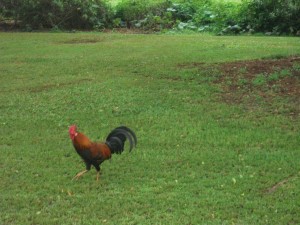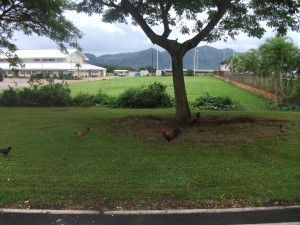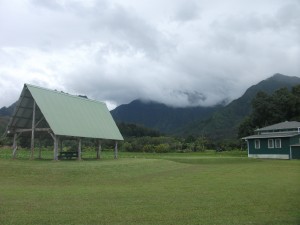Early in 2008, after I learned that I would be offered a three-week visiting fellowship by the Centre for Advanced Engineering in New Zealand (CAENZ), colleagues and friends had a tendency to ask why that country was so interested in my expertise in planning for natural hazards. I was bemused by the question every time. “Have you watched Lord of the Rings?” I would ask. Because the movie trilogy was so popular, the answer was “yes” about 95 percent of the time. I would then follow by asking, “You realize those movies were filmed in New Zealand?” Most of the time, people were well aware of this. “Think about that landscape in the movies,” I would advise. “The logic will come to you.”
Those mountains, the volcanic craters, the rugged hills—they had the makings of many natural hazards, including landslides, earthquakes, volcanic eruptions, and avalanches, to say nothing of New Zealand’s flash floods and ocean storms, including the occasional cyclone. Throw in a few orcs and dark riders, and you have a hell of a script.
People have asked fewer questions about my three trips in the last four years to Hawaii, perhaps because it is more familiar as part of the U.S. They are aware of its volcanoes, may have read about tsunamis, but still . . . . it is paradise, isn’t it? Well, in a sense, but that is what I thought of New Zealand, as well. I couldn’t believe someone was paying me to come there, even though I was very much aware of doing some very real work: seven lectures and seminars in three weeks, as well as attending other events and producing a white paper for CAENZ before I left. It would have been less of a paradise if I had been in Christchurch during the 2010-11 earthquakes. Just as Hawaii was less of a paradise during Hurricane Iniki in 1992.
My most recent visit to Hawaii ended just a week ago, on March 12. I was there as one of three subcontractors working on developing a new training course for the National Disaster Preparedness Training Center (NDPTC) at the University of Hawaii (UH), the only one of seven such centers in the National Domestic Preparedness Consortium specifically devoted to natural hazards rather than terrorism and other human-caused events. The center has recently added disaster recovery to a previous focus on disaster response. Two years ago in June, I taught a three-hour seminar for the UH planning program’s Summer Disaster Institute, focusing on the theory of disaster recovery. The center is led by an urban planning professor, Karl Kim, who is himself a whirlwind of activity and the person who initially created the center. Over the last two to three years, Karl and I have built a significant working relationship between NDPTC and the American Planning Association, where I manage the Hazards Planning Research Center. This is different from the New Zealand relationship in one important way: NDPTC aims to provide training throughout the United States, whereas CAENZ was specifically interested in applying my expertise to hazards policy in New Zealand.
This article has no central purpose. I kept trying to think of one, but decided it would be more fun just to detail the trip itself, in part because my wife tagged along, and she brought with us our 10-year-old grandson, Angel, who skipped a few days of school with the blessing of a principal who was wisely convinced that he might learn more on the trip than he ordinarily would in school. Angel is a very inquisitive kid. He has read most of the I Survived books, in which characters somehow survive harrowing events in world history, like the San Francisco earthquake of 1906, Hurricane Katrina, the bombing of the World Trade Center, and, yes, Pearl Harbor. Now Pearl Harbor, at least, could become a real place, with a real story to tell, and become more than historical fiction.
Thus, we had a family trio making a trip that for me was largely work-oriented, but learning- and play-oriented for my wife and grandson. We all woke early on March 6, trudging through the curbside snow into a waiting taxi at 3:45 a.m., to go to O’Hare International Airport, catch a flight to San Francisco, get a quick lunch between flights, then catch a second flight to Honolulu, landing at about 3 p.m. with our bodies feeling like 7 p.m. (That difference would grow to five hours over the weekend, as most of the U.S. switched to Daylight Savings Time, but not Hawaii.) By 5 p.m., after getting baggage and a rental car, we were at our hotel, checking in and unpacking. An hour later, we were looking for an early dinner so that I could rise again at 5 a.m. for a flight to Kaua’i. Within the same block that housed the Hawaii Prince Hotel Waikiki, we quickly found Outback. Good enough, no need to search farther, I said. Outback, a chain, is what it is, but for a chain, it serves pretty respectable food. I was satisfied with my sirloin and lobster combo, and by 9 p.m. (1 a.m. where we started the day), we were all sound asleep.
Early Friday morning, the three of us working with NDPTC—myself, Gavin Smith of the University of North Carolina’s Coastal Hazards Center, and Carolyn Harshman, a San Diego consultant and president of Emergency Planning Consultants—drove in a rental car back to Honolulu International Airport for a half-hour flight on Hawaiian Airlines to Lihu’e, on Kaua’i, the farthest west of the main islands. Kaua’i was the target of Hurricane Iniki in 1992, and I had read some after-action reports of the relief operations on the flights from Chicago.
We had a full day ahead of us. First, the only significant roads in Kauai circle the perimeter of most of the island, with the interior dominated by lush mountains. All the towns are squeezed into a narrow coastline, making traffic a slow-moving nightmare, even though much of the coastal scenery is drop-dead gorgeous. Second, I immediately noticed that one thing I had been told was true: the island has a large number of feral chickens. They were wandering the parking lot of the county administration building when we arrived. Before Iniki, they were farm chickens in coops, but the hurricane sprung their cages, and there is no putting the genie back in the bottle. My wife, when I told her of this on the way to Hawaii, asked why people did not go out and recapture them. One may as well ask why no one has trapped all the snakes in the Everglades. One look at the scenery would dissuade anyone from such a mad scheme, aside from the fact that the return of value on the effort involved would be pitifully small. The chickens are now wild for all time, just like the nutria that escaped into the Louisiana bayou country nearly a century ago.
But my wife has not seen Kaua’i. She can be excused for an innocent question.
Our trip to the North Shore of Kaua’i put us in touch with a remarkably articulate advocate for community involvement in disaster recovery. Maka’ala Ka’aumoana speaks to the value of long-term residents who understand the imperatives of survival in a shoreline community that can be imperiled by storms such as Hurricane Iniki, and she has seen the slow erosion of such knowledge and skills as Hanalei has become an increasingly transitory, visitor-oriented community. Still, she argues forcefully for “community as the convener” when all the county, state, and federal agencies show up to help after a disaster. Community is tricky business in Hawaii, which does not have the kind of decentralized small town governance of most mainland states. There are only four counties, each of which encompasses one major island and sometimes nearby smaller islands. A mayor is mayor of the entire island, not just of, say, Hilo or Honolulu. And so, even at the level of a village like Hanalei, the official governance mechanisms still reside with the county. Whether that is good or bad, or how it came about, is beside the point here. The reality for Maka’ala is that governing authority resides elsewhere, but the moral and civic authority of the community still resides with the people in Hanalei. They have plans, and they want them honored. At the same time, she gently challenges the values of some newcomers and visitors who seem to want all the amenities they left behind somewhere else. “If you did not come here to slow down,” she says she asks them, “why did you come here at all?” Hanalei, after all, has the look and feel of a town at the end of the road, which it almost is. Look closely at a map of Kaua’i, and you will notice that Route 56 goes only a few miles further west along the coast before ending at Ha’ena. The coast gets pretty rugged after that.
It is hard to imagine how one evacuates people on Kaua’i amid the traffic congestion that dominates the main roads on a daily basis, let alone in a crisis. We returned to Lihu’e, and it took nearly half the afternoon to do it. Volcanic islands tend to produce gorgeous but challenging terrain. We had the opportunity to hear from utility executives, county emergency management officials, and other citizens about the issues connected with protecting such a vulnerable population. Unlike the mainland, there is no larger grid, for instance, to provide backup power. That calls for a different kind of resilience than the rest of us are used to. There is a great deal to learn in a place like Kaua’i, but one must be prepared to listen. By the time we flew back to Honolulu in the evening, I think we all had learned a great deal indeed, and owed a debt of gratitude to some of the county officials who had arranged these conversations for us.
Meanwhile, my wife had taken our grandson to Pearl Harbor, where he saw the U.S.S. Arizona memorial and toured the U.S.S. Missouri, which hosted the signing ceremony for the Japanese surrender at the end of World War II. My next posting will discuss our time on Oahu.
Jim Schwab



Trackbacks/Pingbacks